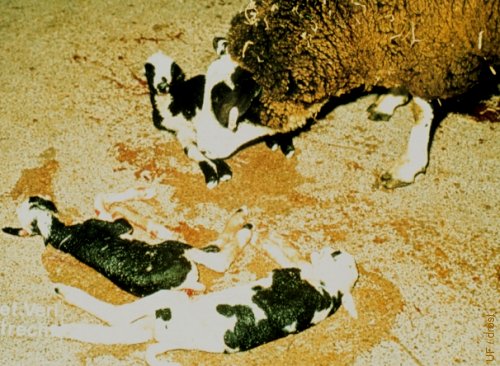The Visual Guide to
Ovine Reproduction
- Lambing Facilities
- Normal Lambing
- Early Signs of Labor
- Presentation
- Lambing Injuries
- Cesarean Section
- Fetotomy
- Neonate
Obstetrics: Lambing Injuries

Retained Fetuses.
Retained fetuses in a ewe that failed to deliver them due to an obstruction. The uterus shows hypostatic congestion and distended blood vessels. The wall becomes very fragile.
Smith MC (2006)
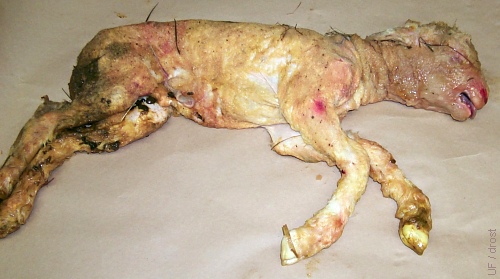
Stillborn Lamb.
The hind legs are stained with meconium indicating that the lamb was distressed (hypoxic) in utero prior to delivery, causing it to defecate in utero. Fetal oversize contributed to the dystocia.
Smith MC (2006)
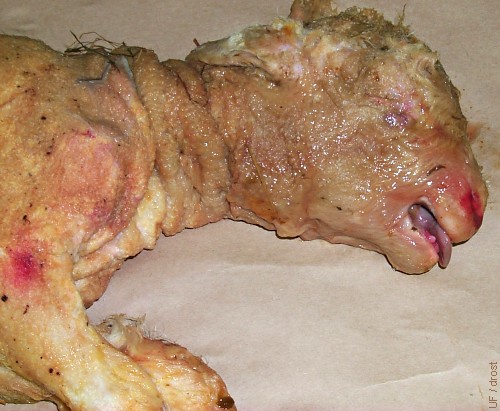
Swollen Head.
Sustained compression of the jugular veins during prolonged delivery of this large lamb lead to swelling of the head and the tongue.
Smith MC (2006)
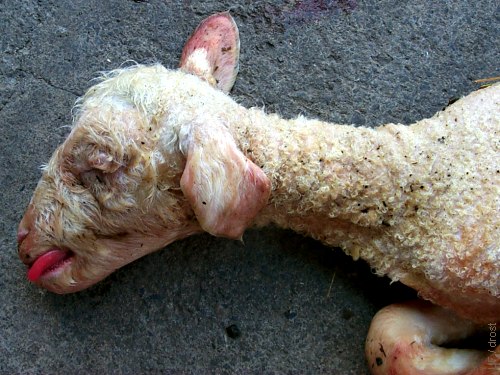
Swollen Tongue.
Lambs born with a swollen tongue, usually due to compressed venous return, have difficulty nursing and will need to be tube fed until the swelling has subsided.
Smith MC (2006)
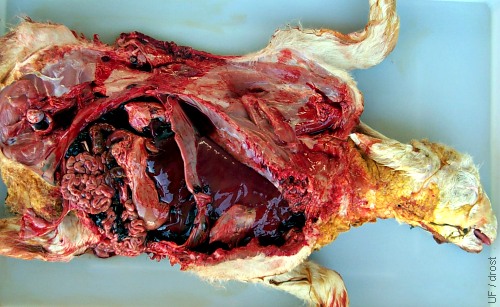
Intrathoracic Hemorrhage.
Severe intrathoracic bleeding as the result of forceful extraction.
Smith MC (2006)
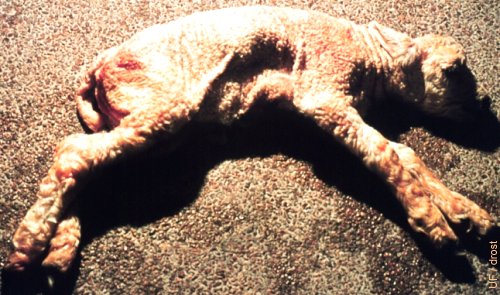
Cracked Ribs.
This large lamb sustained several cracked ribs during the process of forced extraction. Rib fractures are extremely painful and inhibit breathing. A rule of thumb is that if three or more ribs are fractured, the lamb will not survive.
Utrecht (1976)
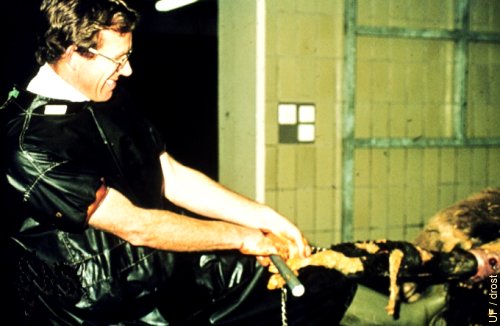
Excessive Force.
With the ewe in lateral recumbency on a table, excessive force is demonstrated in the delivery of a dead fetus in posterior presentation.
Utrecht (1976)
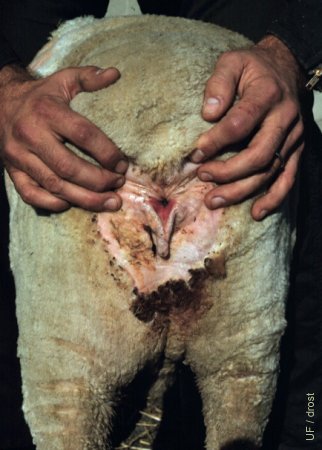
2nd Degree Perineal Laceration.
Old healing second-degree perineal laceration. The dorsal commissure of the vulva and the perineum were torn during forceful assisted lambing. The anal sphincter remained intact.
Drost M (1971)

